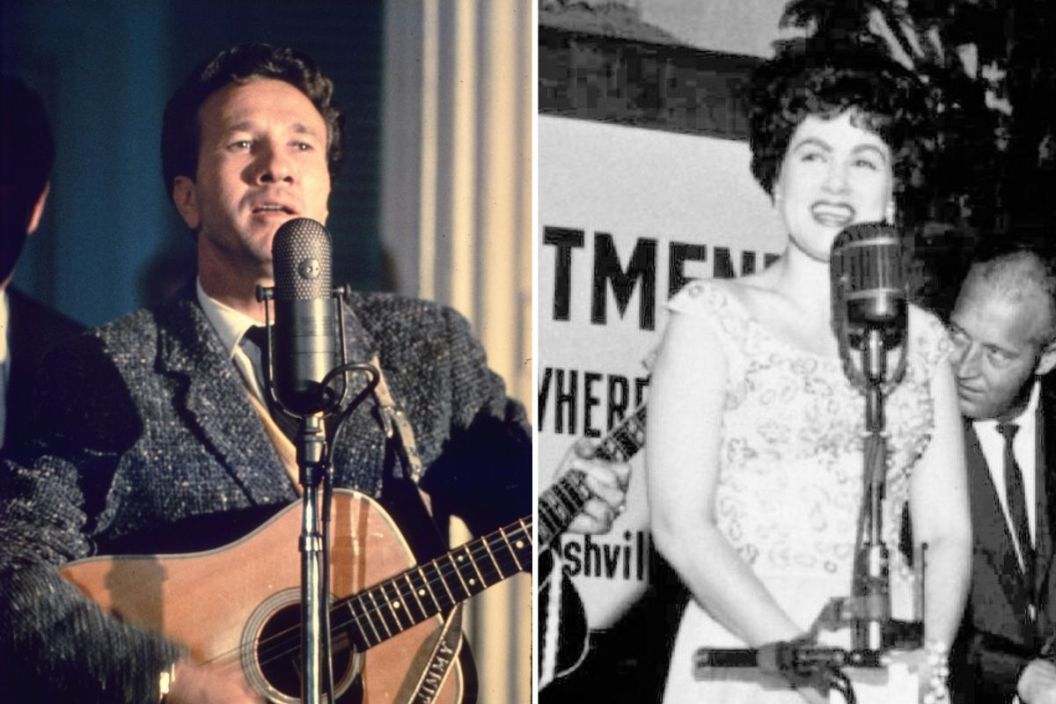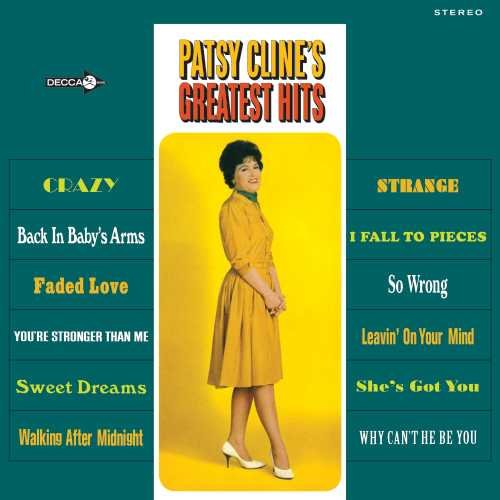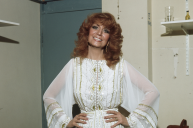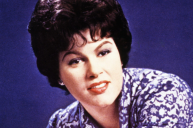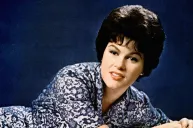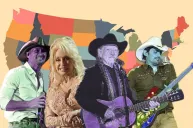The year 1961 was a busy and history-altering one for future country music legends. Marty Robbins took part in the creation of fuzzed-out garage rock, Leroy Van Dyke set a record made to be broken (like it or not) by Florida Georgia Line, Jimmy Dean proved that audiences still reacted to throwback story-songs and two all-time greats, Willie Nelson and Patsy Cline, punctuated important chapters in their stories.
Read on for our playlist of impactful country hits turning 60 in 2021.
"Don't Worry," Marty Robbins
What might've been just another country song about heartbreak altered the course of rock 'n' roll history.
Session musician Grady Martin used a faulty channel in a mixing desk for his bass, creating that distorted, fuzzy sound that's sure to catch first-time listeners off guard. Producer Don Law left the honest mistake in the final cut, paving the way for Gibson's reverse-engineered Maestro FZ-1 Fuzz-Tone, the same pedal used by Keith Richards when the Rolling Stones recorded "Satisfaction."
Robbins' hit was the third single off his More Greatest Hits compilation.
"Walk on By," Leroy Van Dyke
Before Florida Georgia Line moved the goalposts with "Cruise" and Bebe Rexha collaboration "Meant to Be," Leroy Van Dyke set a seemingly unbreakable record when "Walk on By" reigned atop the country singles chart for 19 weeks.
Van Dyke's crossover hit reached No. 5 on the U.S. Billboard Hot 100. Its story of a man wanting a partner to play along with his cheating ways has been covered over the years by Conway Twitty, Donna Fargo, Asleep at the Wheel and others.
It's not to be confused with another iconic song from the '60s. Just two years later, Dionne Warwick recorded Burt Bacharach and Hal David's song of the same title during a session that brought us another hit, "Anyone Who Had a Heart."
Quick tip on how to tell the songs apart: the Bacharach & David co-write is the only song titled "Walk on By" to appear on Isaac Hayes' Hot Buttered Soul album as a 12-minute funk jam.
"Big Bad John," Jimmy Dean
Jimmy Dean's claim to fame (aside from sausage, of course) remains this 1961 hit he co-wrote with country king Roy Acuff. Its story of one tough hombre drifts into the same folklore territory as over-the-top tales of Paul Bunyan and John Henry.
The instant hit topped both the country and pop charts, proving that story-songs still connected with a broad audience. It won the Grammy Award for Best Country & Western Recording and picked up two additional nominations: Best Male Solo Vocal Performance and Record of the Year.
Dean's tall tale (John was 6'6", after all) inspired an answer song that same year: Dottie West's "My Big John." Dean's sequel, "The Cajun Queen," explains that John's lover saves him from the collapsed mine in the first song. The couple goes on to marry and have 110 grandchildren. "Little Bitty Big John" rounds out Dean's trilogy and lets us eavesdrop on when John's son learned of Dad's incredible feats.
Read More: Watch Faith Hill's Moving Performance at Aretha Franklin's Funeral
"Hello Walls," Faron Young
Faron Young's 1961 recording of "Hello Walls" became another well-earned hit and his only entry in the all-genre Top 40. It proved the Hillbilly Heartthrob had the vocal versatility to embrace changes to that Nashville sound.
Yet the legacy of "Hello Walls" has more to do with its songwriter than its singer. The Wille Nelson composition helped break his career about four months before a more famous showpiece of Nelson's talent as a lyricist, "Crazy," added to the legend of Patsy Cline.
"I Fall to Pieces," Patsy Cline
Songwriting greats Harlan Howard and Hank Cochran co-wrote what's now considered an undisputed country standard. The ready-made hit got turned down by multiple singers, including Brenda Lee and Roy Drusky, before it became Patsy Cline's first No. 1 country single.
Beyond catapulting Cline to the top of the charts, "I Fall to Pieces" marks the moment when the country legend and her team embraced her voice's pop and jazz capabilities.
"On the night of the session, we absolutely did not want to do the standard 4:4 shuffle that had by then been done to death," Howard said (as quoted on his website). "We were trying all kinds of other (basic rhythm) combinations, but they all just laid there and bled all over the floor. So, it had to be the shuffle then, like it or not. But the amazing thing was, once Patsy got into the groove, she just caressed those lyrics and that melody so tenderly that it was just like satin. We knew we had magic in the can when, on the fourth take, every grown man in that studio was bawling like a baby and Bradley said `That's the one'."
Now Watch: Andy Griffith Turned Brad Paisley's 'Waitin' on a Woman' Video into a Sentimental Classic
